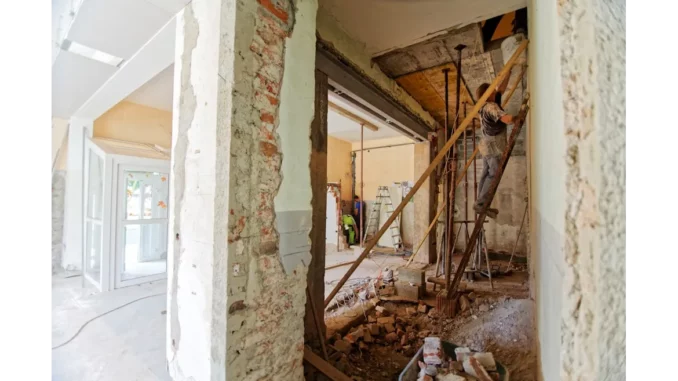
The St. James’ Hospital site in Portsmouth is poised for a significant transformation, one that deftly balances the need for modern residential development with the preservation of its rich historical heritage. This iconic site, renowned for its historical and architectural significance, is set to be redeveloped into a vibrant residential community. The planned construction of 58 new homes has generated both anticipation and debate, offering a unique opportunity to examine how historical sites can be thoughtfully adapted to serve contemporary needs while honouring their storied past.
Successful low-energy building design hinges on careful planning. Focus360 Energy can help.
St. James’ Hospital has been a fixture in Portsmouth since it was originally established as an asylum. Designed with a forward-thinking approach to mental health care, it featured open spaces and facilities like kitchen gardens, a dairy, a brewery, and a chapel, emphasising a holistic approach to treatment. The hospital’s role expanded during the world wars when it provided sanctuary for wounded soldiers, further embedding its importance in the local community’s narrative. With the establishment of the National Health Service in 1948, St. James’ became an integral part of the public healthcare system, continuing its service until its closure in 2018. This historical context underscores the need for any redevelopment to be sensitive to the hospital’s legacy.
The redevelopment initiative, led by the PJ Livesey Group, a firm renowned for its proficiency in restoring historical structures, aims to convert the Gothic-style Grade II listed buildings into distinctive residential homes. The proposed conversion envisions a blend of spacious apartments and two-storey houses, each meticulously designed to preserve the original architecture’s character and charm. Additionally, new contemporary homes will be constructed at the rear of the site, providing a variety of two to five-bedroom houses equipped with private gardens. This approach not only aims to retain the aesthetic value of the site but also ensures that the new development integrates seamlessly with the existing structures.
Crucially, the redevelopment will preserve key historical elements, ensuring that St. James’ continues to reflect its storied past. The Grade II listed chapel, along with the cricket pitch and pavilion, will remain untouched, safeguarding the site’s historical essence. Furthermore, the plans include enhancing the grounds with new cycling and walking routes, promoting a healthy and active lifestyle for the future residents. This thoughtful approach aims to preserve the site’s historical significance while adapting it to contemporary living standards, thus maintaining its relevance in a modern urban context.
Community engagement has been a cornerstone of the redevelopment process, with a public consultation period allowing local residents to express their views and concerns. This collaborative effort seeks to ensure that the redevelopment aligns with the aspirations and values of the community it serves. However, the project has not been without its controversies. Concerns have been raised regarding the potential loss of green spaces, particularly the Matron’s Garden. Despite these reservations, the planning inspector’s approval underscores the urgent need for housing in Portsmouth, concluding that the benefits of providing much-needed residential units outweigh the potential losses. This decision highlights the delicate balancing act required to harmonise development with preservation.
As the redevelopment of St. James’ Hospital progresses, it emerges as a compelling example of how historical sites can be revitalised to meet modern demands without forsaking their historical essence. The interplay of old and new, tradition and innovation, mirrors a broader trend in urban development where preserving heritage is seen as integral to creating sustainable communities. The evolution of St. James’ Hospital is not merely about constructing new homes; it is about forging a future that honours the past. As the redevelopment begins in earnest, the community anticipates a future where this historic site continues to hold significance for generations to come. This project serves as a testament to the potential of adaptive reuse, demonstrating that with thoughtful planning and community involvement, historical sites can flourish anew in the modern age.


Be the first to comment